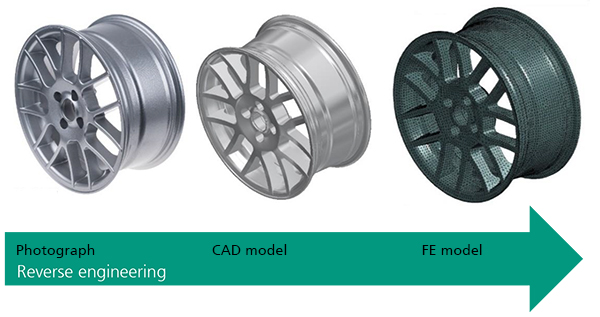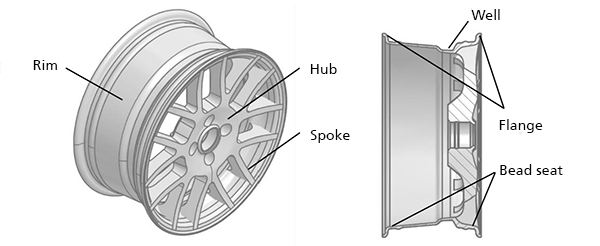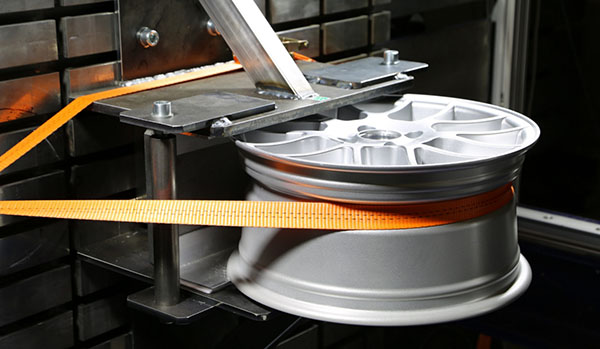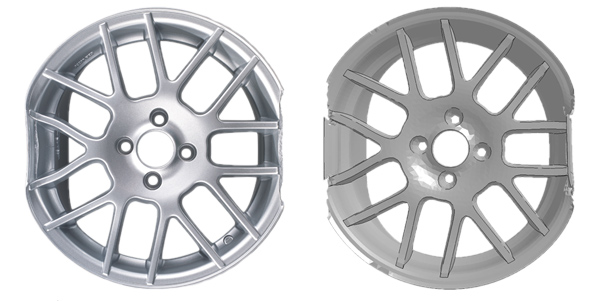Characterization and modeling of a vehicle wheel under crash-relevant conditions
The challenge of crash simulation
In case of frontal crash, vehicle wheels play an important role for the vehicle crash behavior, especially in case of small overlap crash, because this is where the wheel may be pushed into the passenger cabin.
Crash simulations help to reduce the number of elaborate and costly crash tests. For this purpose, valid simulation models have to be created for the single vehicle components.
Within the scope of a bachelor thesis, a vehicle wheel was experimentally characterized and numerically simulated at Fraunhofer EMI in cooperation with the Karlsruhe Institute of Technology (KIT). The objective was to make a reliable description of the deformation and failure behavior of the wheel under crash-relevant loads possible and to apply this to a crash simulation.



